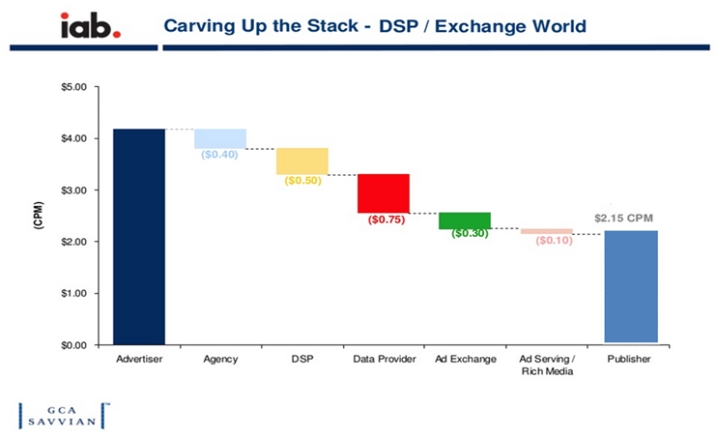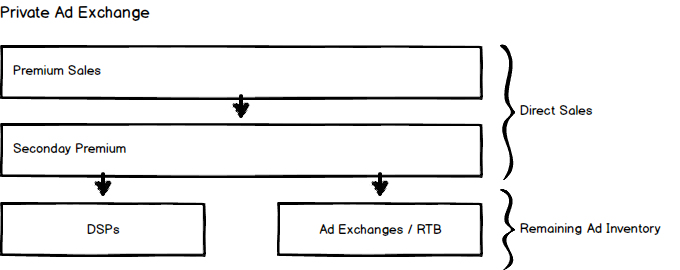Over the last four years, we at east vision system observed a new trend in the digital advertising ecosystem. More and more publishers want to build their own private ad exchange. In this blog post we will explore the reasons behind this need for Private Ad Exchanges.
All started with the advent of Real-Time Bidding in 2009. At first glance, this new technology looks like a win-win for both publishers and advertisers. Publishers will be able to increase the value of their unsold or remnant inventory, and buyers can reach their audiences more efficiently and leverage data on making buying decisions.
But many premium publishers were concerned that this new technology will have a “race to the bottom” effect on the value of their impressions. Through RTB, buyers are able to cherry-pick specific impressions for a low price. Publishers are worried that advertisers will use the programmatic channel to buy inventory via RTB-powered exchanges, lowering the revenue from direct sales channel, and in doing so, cut away at their core revenue.
In this circumstances the first Private Ad Exchanges were born. Private Ad Exchanges help publishers to leverage RTB/Programmatic technologies, while still maintaining control over who could buy their inventory, and at what price. Private Ad Exchanges also enabled publishers to create a new sales channel, known as “Indirect Premium”. A tier of inventory below premium but above remnant and doing so increasing yield, without cannibalizing direct sales.
Private Ad Exchanges solution where build for multiple channels like video, display and mobile.
When a client asks us for a Private Ad Exchange solution, the requirements can differ from company to company. What defines a software solution as a Private Ad Exchange are the following key elements:
Real Time Bidding Technology
At its core, Private Ad Exchanges solutions should have technical capabilities that enable Publishers to offer up inventory to buyers who can plug-in and bid on impressions in real-time. The solution should be highly scalable, capable of making extreme low latency ad decisions.
Traditional Yield Optimization
To maximize revenue, and increase the percentage of impressions that are monetized, Private Ad Exchanges should also enable Publishers to continue to work with “non-RTB” enabled demand sources. These traditional demand ad sources will help fill the remnant inventory.
Access Controls
Private Ad Exchanges provide publishers with control over who is able to gain access to purchase their ad inventory. Access is controlled through a console – with publishers having the control over the entities able to purchase impressions.
Insight and Analytics
As Private Ad Exchanges sit in-between publishers audience information and bid related data. There is a tremendous amount of insight that can be gleaned for the solution. From this insights about who is purchasing inventory and at what price, publishers can improve inventory performance.
Prioritized Bidding
The Prioritized Bidding enables an advertiser to make sure they are gaining access to impressions early on, in a web users viewing session. It also helps to ensure that buyers can more easily achieve campaign goals.
Creative Controls
Key to the Private Ad Exchange is the ability it offers to publishers to control the quality of advertisements that are delivered on their site. The publisher is able to ensure a positive viewing experience for their users – consistent with the publishers brand.
Floors
As the name implies, “floors” refer to the minimum price a buyer needs to pay to secure an ad impressions. In combination with other data points, floors give publishers control over the monetization of their inventory. The floors can be setup at site level, targeting level or ad source level.
Advertiser perspective
From an advertiser perspective, as Private Ad Exchange publishers are typically of significant size and offer inventory of superior quality, buyers will benefit from gaining access to top tier inventory. However there are additional benefits that exist for buyers as well:
Brand Safety
Brand safety is a critical component for advertisers. While audience data certainly matters, most advertisers are deeply concerned with the context in which their ads are delivered.
Direct Deal Access / Up-fronts
Working with a Private Ad Exchange also gives agencies and advertisers the ability to arrange upfront advertising commitments that ensure prioritized delivery of audience based campaigns. For a buyer, this approach marries the ability to fully leverage RTB, making intelligent decision about which impressions to purchase in real time, with the comfort that comes with more traditional, committed impression based campaigns.
Advertising Spending
According to the IAB, in a typical distribution chain through public ad exchange, approximately 50% of the advertiser campaign budget is diluted by various middlemen until finally reaches the publisher. Now, with the right technology resources available, this 50% loss of revenue in terms of distribution cost, would argue for publishers to start thinking about taking control of the technology and bring it in-house. Although some SAAS services exists that provide Private Ad Exchange solutions, by using a SAAS service no value is added to the company since a 3rd party service is used.


Why publishers want a Private Ad Exchange ? | P…, on November 6th, 2015
[…] New trend in the digital advertising ecosystem. More and more publishers want to build their own private ad exchange. In this blog post … […]